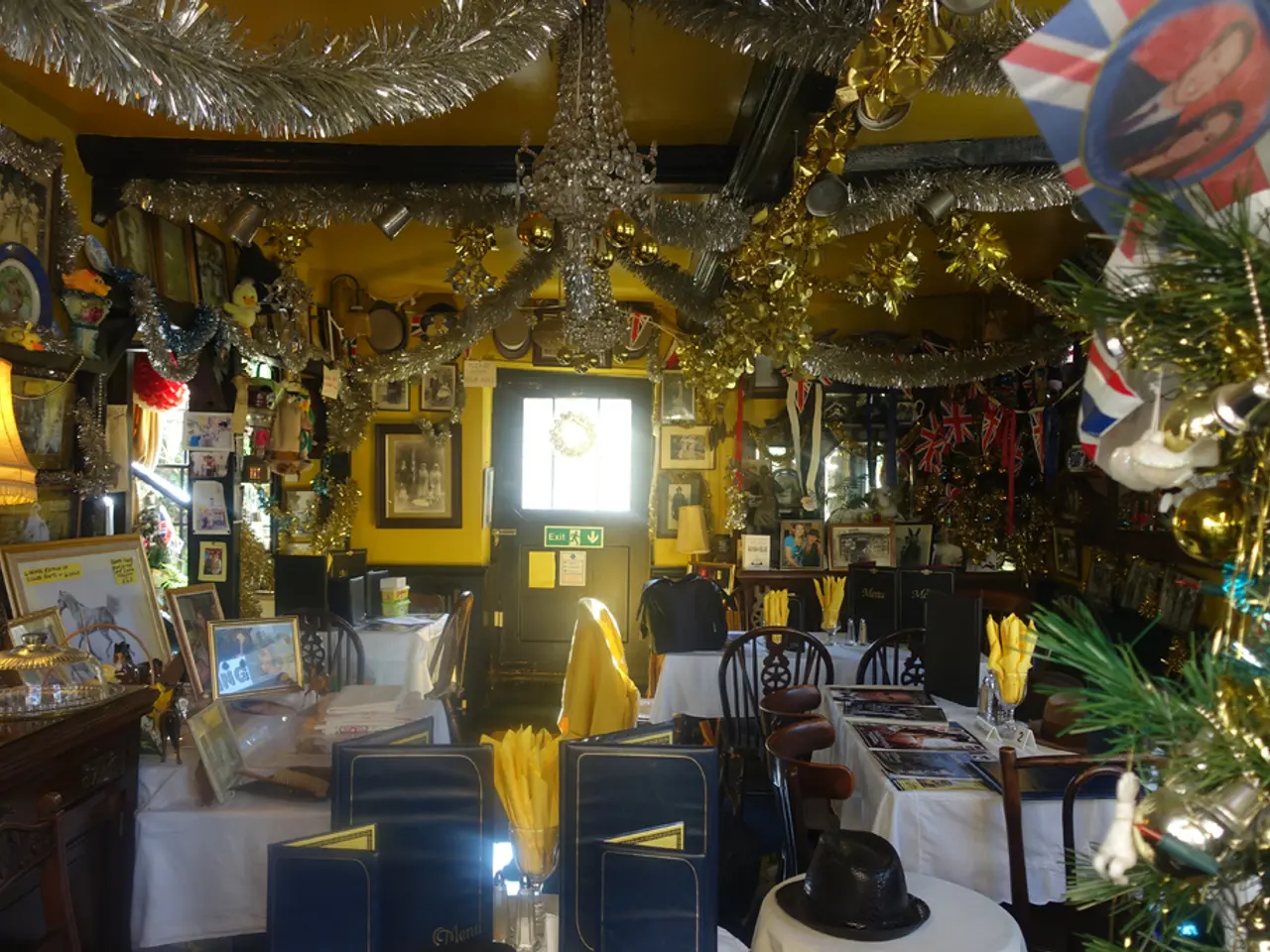Eileen Gray: Illustrious Mastermind Behind Pioneering Modernist Designs - Gain Insight into Her Life's Work and Enduring Legacy
Eileen Gray, a visionary architect and designer born in County Wexford, Ireland in 1878, left an indelible mark on the world of modernist design. Her groundbreaking work, however, was often overshadowed by gender bias and the influence of her contemporaries, particularly Le Corbusier.
Gray's career took off in 1913 when she received her first recognition at the Decorator's Salon. In the following years, she honed her skills in lacquer under Charles Dean, a lacquer specialist in London's Soho, and later studied painting at the Slade School of Fine Art. Her breakthrough commission came after World War 1 when she was asked to design the interiors of Madame Mathieu-Lévy's Parisian apartment.
One of Gray's most iconic designs, the lacquer Brick Screen, was created for this apartment. Her designs continued to evolve, with pieces like the Bibendum Chair, named after the Michelin Man character, and the Roquebrune Chair, designed for her second home, showcasing her commitment to lightweight, adaptable, and multipurpose furniture.
In 1926, Gray, along with her partner Jean Badovici, designed and built Villa E-1027 in Roquebrune-Cap-Martin, France. The villa, considered a masterpiece of 20th century design, embodied Gray's innovative vision and attention to detail. However, the relationship between Gray and Badovici ended, and Le Corbusier moved into Villa E-1027, causing further tension.
Le Corbusier's actions at E-1027 would fundamentally alter their professional and personal relationship. In 1938 and 1939, he painted large-scale murals directly on the villa's pristine white walls without Gray's consent but with Badovici's approval. This act, which Gray considered "an act of vandalism," not only altered the aesthetic integrity of her work but also, in effect, obscured her authorship.
The murals and subsequent misattribution contributed to Gray's relative obscurity in architectural history for much of the 20th century. It was only in 1972, four years before her death, that she received her first retrospective and wider recognition as a pioneer of modernist design.
The controversy surrounding E-1027 underscores the difficulties women architects of the era faced in asserting their professional identities and legacies. Gray's experience serves as a poignant case study in the history of women’s contributions to architecture.
In 1976, Eileen Gray passed away, but her legacy lives on. She granted worldwide rights to manufacture and distribute her designs to Aram Designs just prior to her death. Today, her designs are synonymous with the cutting-edge International Style and Modernist design movement, and her works continue to inspire a new generation of architects and designers.
[1] Sources: http://www.eileengray.ie/biography, https://www.vam.ac.uk/articles/eileen-gray-designer-and-architect [2] Image Source: https://www.vam.ac.uk/articles/eileen-gray-designer-and-architect [3] Image Caption: Eileen Gray, Roquebrune Chair, 1929. Lacquer and plywood. Photography by James Brittain. © Victoria and Albert Museum, London. [4] Image Caption: Eileen Gray, E-1027 Adjustable Side Table, 1929. Lacquer and plywood. Photography by James Brittain. © Victoria and Albert Museum, London.
- Eileen Gray, known for her groundbreaking work in interior design, perfected her skills in both lacquer and painting, preparing her for commissions like the decoration of Madame Mathieu-Leve's bathroom.
- Gray's unique furniture designs, such as the Bibendum Chair and the Roquebrune Chair, were characterized by their lightweight, adaptable, and multipurpose nature, reflecting a trend towards modernist aesthetics.
- The art of interior design was evident in Villa E-1027, a masterpiece where Gray showcased her innovative vision, with works like the lacquer Brick Screen and adjustable side table.
- Sadly, Le Corbusier's actions at Villa E-1027, including painting large-scale murals without Gray's consent, obscured her authorship and contributed to the misrepresentation of her role in modernist design.
- Despite these challenges, Eileen Gray's designs have endured, being celebrated for their modernist flair and influence in the home-and-garden lifestyle, with her works continuing to inspire future generations of artists and designers.








